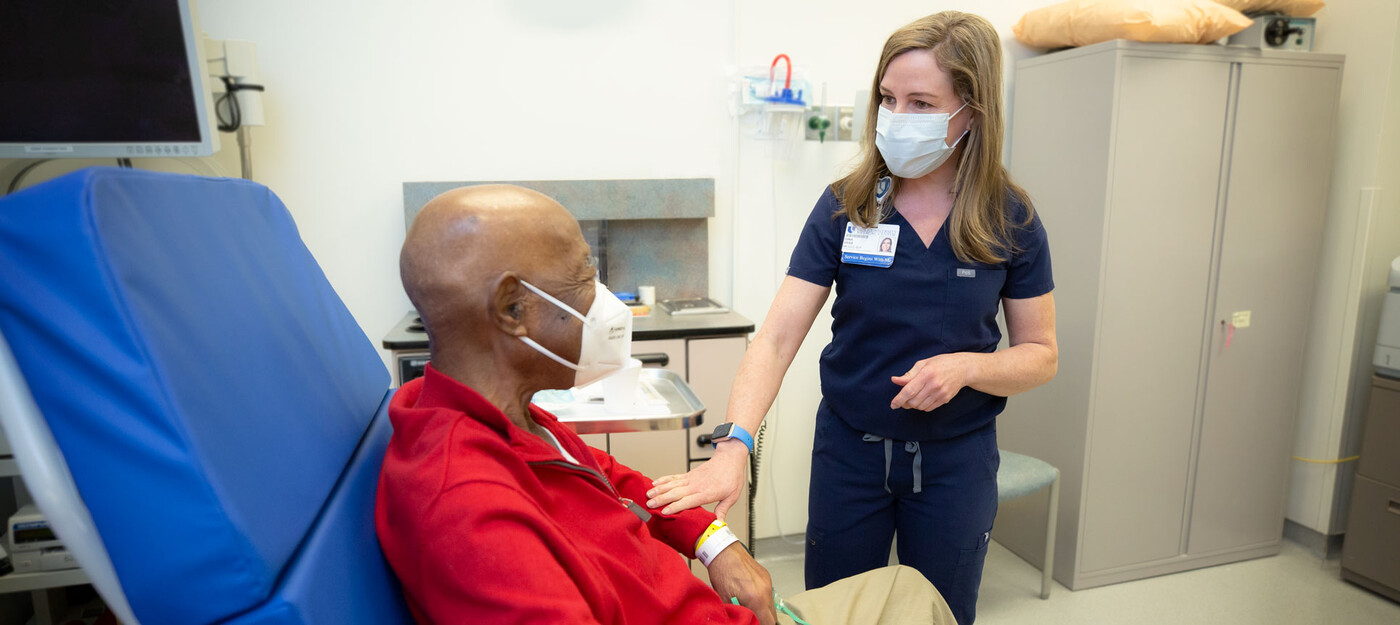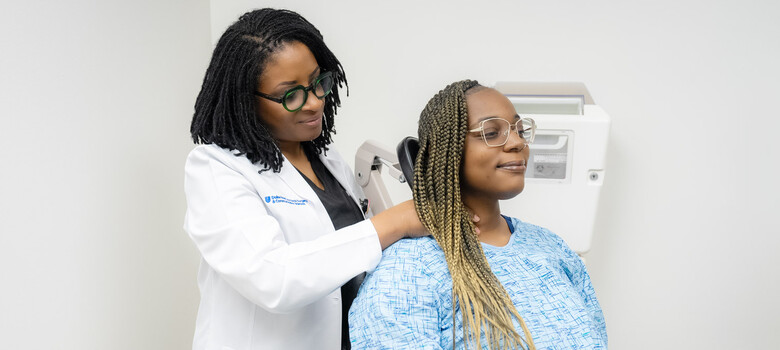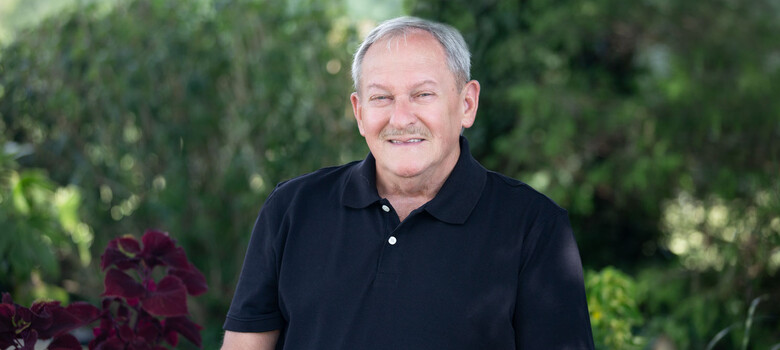Tracheoesophageal Puncture (TEP) Surgery and Tracheoesophageal Voice Prosthesis Help People Speak After Total Laryngectomy
Duke Health Experts Explain How It Works

Duke speech pathologist Gina Vess talks to a patient who has a tracheoesophageal prosthesis.
People with throat cancer or voice box cancers who lose their ability to speak following the removal of of their larynx (voice box) can learn to produce near natural-sounding speech thanks to an advanced procedure and prosthesis offered at Duke Health. “Tracheoesophageal puncture or ‘TEP’ surgery allows patients who undergo a total laryngectomy to have a voice when they otherwise would not,” said Trinitia Cannon, MD, a head and neck surgeon at Duke Cancer Center Raleigh. “It’s a game-changer.”
Here, Dr. Cannon and Duke speech-language pathologist Gina Vess answer frequently asked questions about TEP surgery and tracheoesophageal speech, which they call the “gold-standard in post-laryngectomy communication.”
Who is eligible for TEP surgery?
People who have undergone a total laryngectomy to remove their voice box are eligible for TEP surgery, but the procedure is not recommended for those with poor lung function, poorly controlled diabetes, severe hypothyroidism, or problems with the integrity of the skin on the neck.
What happens during TEP surgery?
According to Dr. Cannon, the TEP procedure is often done at the same time as total laryngectomy surgery, although it can be done months or years later. During a laryngectomy, the larynx is removed, and the connection between your windpipe (trachea) and mouth is severed. The bottom half of the windpipe is rotated forward and connected to the skin, creating a permanent opening for breathing called a stoma.
During the TEP procedure, a surgeon creates a small hole about the size of a pencil eraser in the wall between your trachea and your esophagus, the tube that moves food from your mouth to your stomach. A small one-way valve, called a tracheoesophageal voice prosthesis, is placed inside the hole to direct air into the throat.
How could a tracheoesophageal voice prosthesis help me speak?
Since the vocal cords are completely removed during total laryngectomy surgery, your sound source is lost, Vess explained. TEP surgery with a prosthesis creates a path for air to move from your lungs to the esophagus. This air causes the top of the esophagus to vibrate -- producing a new tracheoesophageal voice.
Is a tracheoesophageal voice prosthetic difficult to use?
Although it takes guidance and practice, “it’s not complicated to learn how to use the prosthesis,” Vess said. Most people only need a few speech therapy sessions to master covering their stoma, coordinating their breath, and cleaning the prosthesis. Accessories can make it easier to cover your stoma, while also filtering the air you inhale and maintaining humidity in your lungs.
Does the prosthetic need to be replaced?
According to Vess, the prosthetic valve lasts several months on average, but it can last up to a year. The replacement procedure does not require surgery and is usually painless. It can be done in a doctor’s office in under an hour, often by a speech-language pathologist. You can also learn to change your prosthetic valve at home. Your speech pathologist will provide guidance about when your prosthesis needs to be replaced.
Are there other options?
Since TEP isn’t for everyone, Dr. Cannon said other options are available for creating speech after a total laryngectomy, including artificial voice boxes and esophageal speech. An artificial voice box (also called an electrolarynx) is a small battery-operated device that is placed against your neck when you want to speak. The device produces vibrations that travel to your throat to help you create electronic-sounding speech. Esophageal speech (also called “burp talking”) requires you to swallow and release air to vibrate your esophagus. Because the tracheoesophageal voice method sounds more natural than an artificial voice box or esophageal speech, Vess said people are happy to learn about this option.





